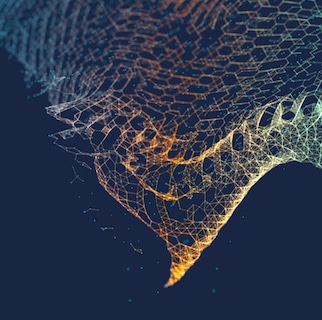
In complex, discrete manufacturing, maintenance, repair and overhaul (MRO) operations are critical over the entire lifecycle of the products. With sustainment becoming a key element in the buying decisions of both government and civilian programs manufacturers are increasingly responsible for products over their entire lifecycle. The days of disengagement after acceptance testing and signoff have passed. Now is the time to adopt a digital cloth in MRO operations.
MRO activities are as much a part of program delivery as the design phase, testing, and initial delivery. The digital threads created in the design and manufacturing phases will not suffice as the product exists in the field, undergoing a lifetime of maintenance and repair activities including upgrades. Hence, the importance of the idea of Digital Cloth, introduced in two previous posts, “Weaving Digital Threads into a Digital Cloth” and “Digital Cloth Is the Fabric of Industry 4.0.”
Manufacturers Are Increasingly Responsible Over a Product’s Entire Lifecycle.
With many buyers now specifying procurement cost to include support and enhancement phases over a program’s anticipated lifecycle, manufacturers are increasingly responsible for and engage with the support, maintenance, repair, and overhaul of the platforms they provide.
MRO activities need to be considered as part of the initial design, not added later as an afterthought, to become part of an MRO digital cloth.
Some of the implications of this transition are:
- All 3D design documents, electrical and electronic schematics, hydraulic designs, and all other documentation must be handed over to the asset owners as part of delivery on a device-by-device basis
- Maintenance requirements must be identified up-front by the OEM, often in conjunction with the asset owner and applicable regulatory agency
- OEMs are expected to be a strategic partner, not just a supplier; therefore OEMs are involved in MRO parts supply and logistics upfront
- OEMs are part of the operational contract support (OCS) mix, including providing technical support and technicians to augment the asset owner’s resource
- OEMs are jointly responsible for maintaining Bills of Materials (BOMs) beyond delivery, to include as-delivered, as-commissioned, as maintained, as overhauled, or as-upgraded
It is impossible to accomplish these tasks if paper-based processes are anywhere in the loop. Another big issue is the involvement of manual processes. Those using analog processes are susceptible to mechanics manually entering updates, serial numbers, or compliance steps into an ERP or other system of record. Under these scenarios, it is easy to “fat finger” or juxtapose a number that can cause an issue. Further, lost paper cards/travelers, smudged entries, or documents mistakenly put in the pocket and taken home. This industry is realizing that the only solution is to go digital. Given there will be disparate systems, it follows that there will be many digital threads, so it will be necessary to interface and interconnect all these threads as a digital MRO cloth.
Here is where the need for the Digital Cloth is an ideal approach and the best solution. Lockheed Martin Space Systems’ Vice President Mike Cacheiro validated this concept when he said, “The Digital Tapestry allows us to operate in an interconnected environment that breaks down barriers both between various internal stakeholders and externally with our supply chain partners.” Cacheiro was referencing their own implementation of a Digital Cloth, as described in this article published in the Supply Chain NAVIGATOR.
What an MRO-Oriented Enterprise Should Look For
To succeed in weaving a Digital Cloth that best supports complex manufacturing, particularly when sustainment is critical to program success, manufacturers should look for:
- Ability to share 3D models via STEP and 3D PDF
- Ability to share maintenance materials via standards like S1000D
- Connectivity to leading ERP applications prevalent in MRO industries
- Support for industry service standards such as FAA A, B, C and D Checks
- Ability to handle field, depot and factory level repair/refurbishment sequences
MRO centric industries should expect more focus on sustainment and lifetime program support in the future. As digital models become ever more commonplace in all aspects of manufacturing, they will be even more so in complex systems-oriented industries. Now is the time to start making the move to a platform that will support each of the threads that comprise your Digital Cloth.

